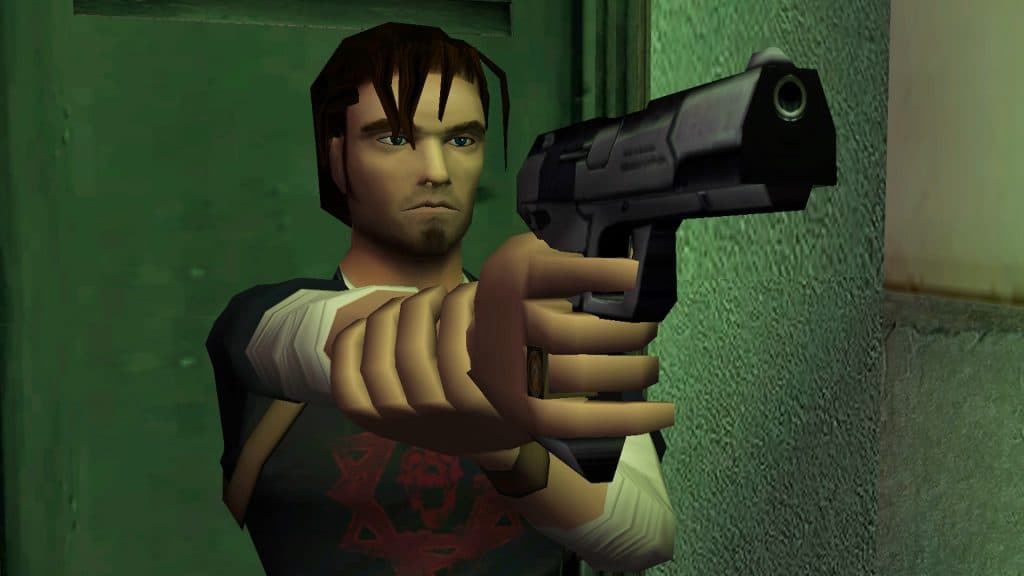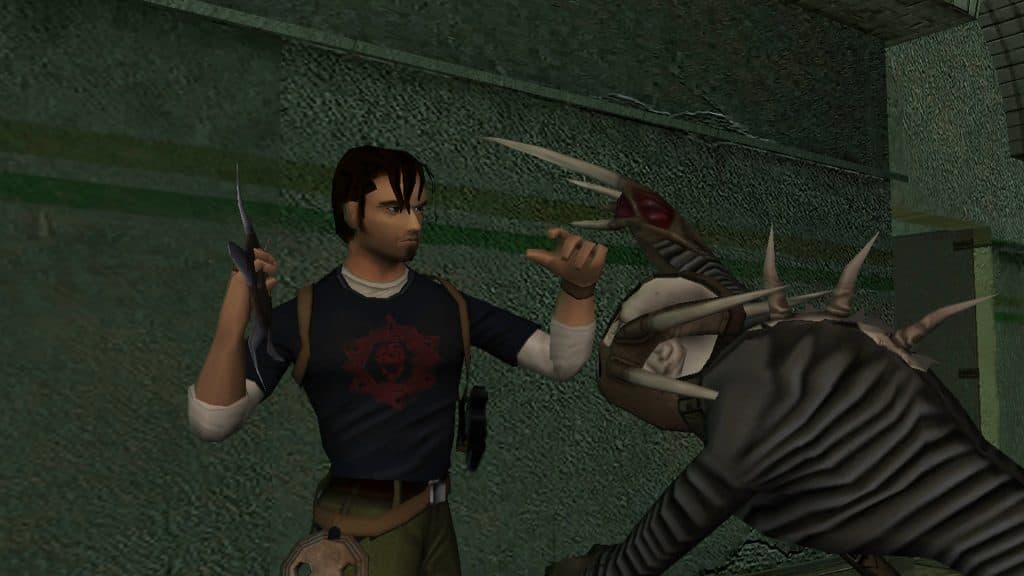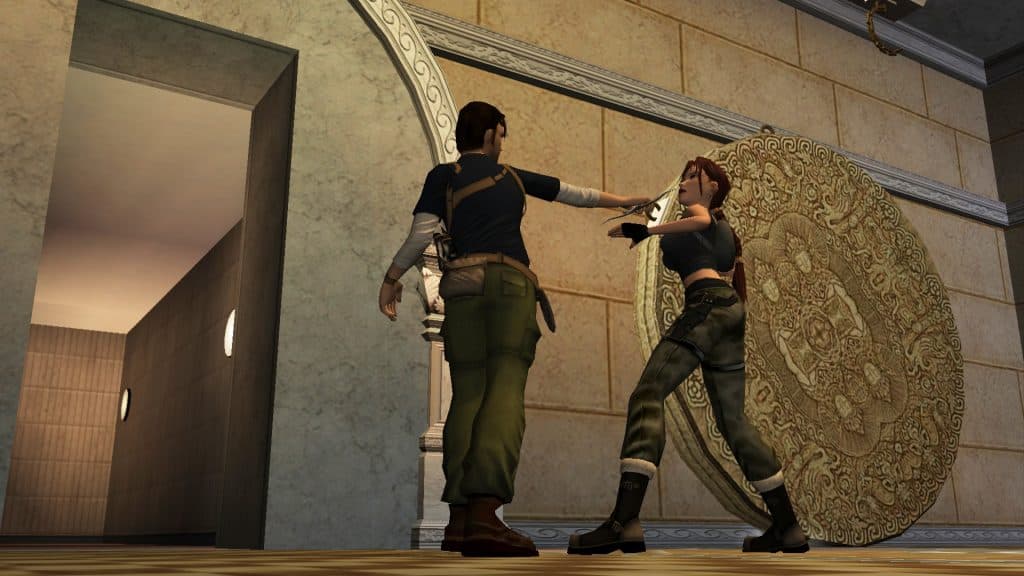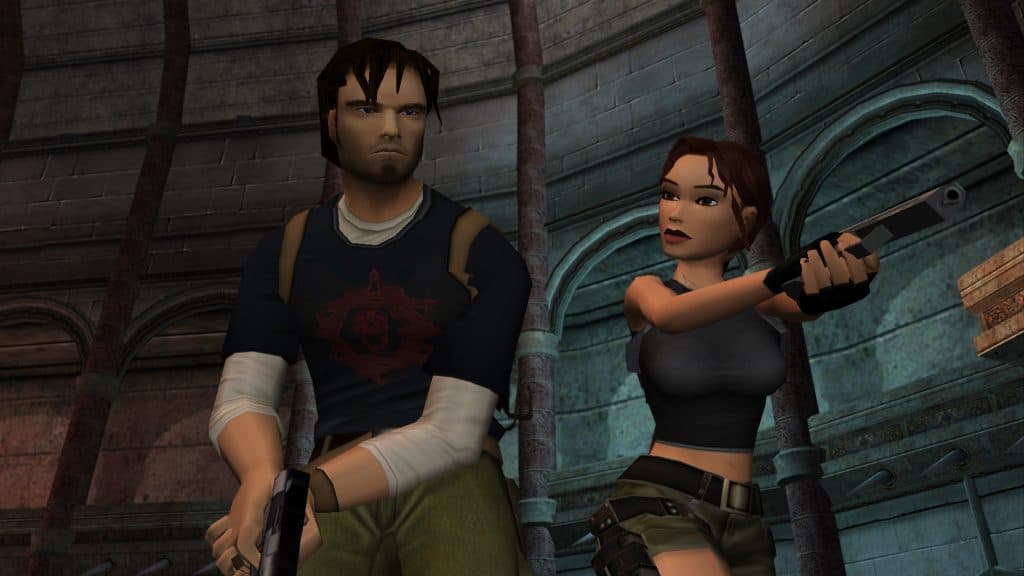Croft & Trent: Analysing The Duo
Matthew Ostridge is a post-graduate history student with a scholarly focus on sexuality, gender, and colonialist violence. Born and raised in Carlisle, Cumbria he fell in love with Lara over a decade ago with Tomb Raider Legend and, whilst Legend firmly remains his favourite, his love for the series has only continued to grow.

2003 saw the release of Tomb Raider: The Angel of Darkness and with it the introduction of Kurtis Trent; a secondary playable protagonist and a first for the franchise. Although making Croft share the spotlight with a male character could be considered controversial, Trent is ultimately an interesting addition to AoD. He functions as a counterpart to Croft, giving us a deeper insight into her character and another perspective into the fascinating world of AoD. This article will explore Trent’s character and how he fits beside Croft in this dark adventure, arguing for his inclusion. For the most part this analysis will be based on the game, with a few references to concepts discovered either in the Murti Schofield archives or during the 25th Celebration Event.
Trent’s character design is clean, and his matching colour scheme makes it clear he is Croft’s counterpart. The touch of red is a nice nod to his ‘far-see’ power, but it would have been perfect had his tattoos survived from the earlier concepts. They helped to further display a touch of mysticism, similar to Amanda Evert’s design in Legend.
He is a clearly driven character and holds a more long-term stake in the plot than Croft does, resulting in his more serious tone and muted reactions that contrast to Croft’s sarcasm-fuelled attitude. Whilst Croft is out to clear her own name, Trent is determined to defeat Eckhardt to avenge his father, a member of the Lux Veritatis whom Eckhardt murdered. Interestingly, this makes Trent the first instance of the now infamous ‘daddy issues’ in the mainline games. Trent does share Croft’s apparent disinterest in the plight of others during this game, but he lacks the jovial (or mocking) tone that Croft employs. His “Hey I don’t give a damn about your black angel” response to a Sanitorium inmate is a far cry from Croft’s many one-liners. “Yes, highly inconvenient having abominations running around loose, isn’t it?” being a personal favourite.

To make Trent distinct from Croft his levels place horror elements front and centre, with combat taking on a larger role. Truthfully, both ‘The Sanitorium’ and ‘Maximum Containment’ would not feel out of place in Resident Evil. Trent’s levels are evocative of the fear felt when exploring Atlantis in the original Tomb Raider with unsettling environments and mutant enemies that would appear from nowhere, often resulting in both a scream and a paused game.
He controls similarly to Croft, but it is a shame his more unique moves, such as his ‘suffocation-by-thighs’ stealth takedown, did not make it through development. Although, he does make Croft’s movement seem more fluid, which is certainly helpful for this specific outing. Ultimately, Trent’s levels provide a change of pace and atmosphere rather than feeling like a waste of the player’s time.

We are sporadically introduced to Trent during the Parisian levels before meeting him properly in the Louvre. One of his first cutscenes, wherein he is seen fleeing from Le Serpent Rouge on his bike, is reminiscent of the bike chase cutscene following the Egypt levels in TR1 which is an enjoyable touch. Less enjoyable, however, is the initial scene between Trent and Croft in the galleries, a scene I truly believe the game would be better without.
Having claimed the Obscura painting, Croft is caught off-guard by Trent’s chirugai and finds herself held at gunpoint. Trent proceeds to disarm Croft and steal the painting but egregiously gropes her body whilst doing so, the uncomfortable atmosphere only heightened by a prominent heartbeat in the background. The scene plays for around two minutes but feels much longer to watch. Whilst Croft being disarmed is not uncommon for the games, having happened in each of the first three titles, the difference here is that Croft is entirely aware of this happening but seemingly cannot act against it. In previous games Croft is disarmed whilst she is unaware; either due to a trance state, courtesy of the Scion in TR1, or due to being unconscious, courtesy of either Bartoli’s henchmen in TR2 or a botched quadbike jump in TR3. Yet, in AoD, Trent causes her to freeze. This results in an uncomfortable scene which casts Trent in a poor light, making his character appear creepy instead of cool. This feeling only worsens when Trent spins Croft around and leans in suggestively. With this in mind, it is perhaps easier to see where some fans’ animosity towards Trent originates.
Ironically, the scene that immediately follows is brilliant. We are taken along for a high-stakes foot chase between Croft and Trent through the Louvre where, despite use of powers and a head start, Trent is unable to shake Croft from his tail.

Ultimately it is in this competitive allyship that the Croft and Trent pairing really shines, we see a mutual respect and an understanding that they are better working together. It is a nice touch that Croft decides that they should work together, showing she is fundamentally in control. Croft also takes the much harder task of tackling the Vault of Ancients after they meet in the Strahov, cementing her role as the more capable of the pair.
The pair’s final scene is as well-written as the Louvre chase. Having praised Croft as being “positively Amazonian” for defeating the vault, Eckhardt reveals a captured Trent who Croft saves. Eckhardt then sets a mutated Boaz on the pair which Trent fights whilst Lara chases down the former. The Croft/Trent partnership is shown best in this decision because both know the other could take down Boaz, but Trent accepts that Croft is better suited to defeating Eckhardt. Trent trusting Croft to fulfill his revenge demonstrates a partnership, not of romance, but of respect. Therefore, when Croft returns to find Trent’s ‘death’ we do not see an emotional loss but rather a content smile that she fulfilled his request, and hope that her ally may still be alive.

Overall, Trent deserves his place in AoD. Whilst he is perhaps less impactful in gameplay due to cut content and time pressures, what is AoD if not a soulful gem smeared with lost potential? Narratively he is Lara’s counterpart, his more serious tone fits the more serious story that AoD tells and makes Croft’s much-loved confidence and sarcasm all the more obvious. Ignoring the Louvre gallery scene, this is a story of mutual goals, respect, and the usefulness of an ally when saving the world… even if all you wanted to do was clear your own name and enjoy a bit of peace.